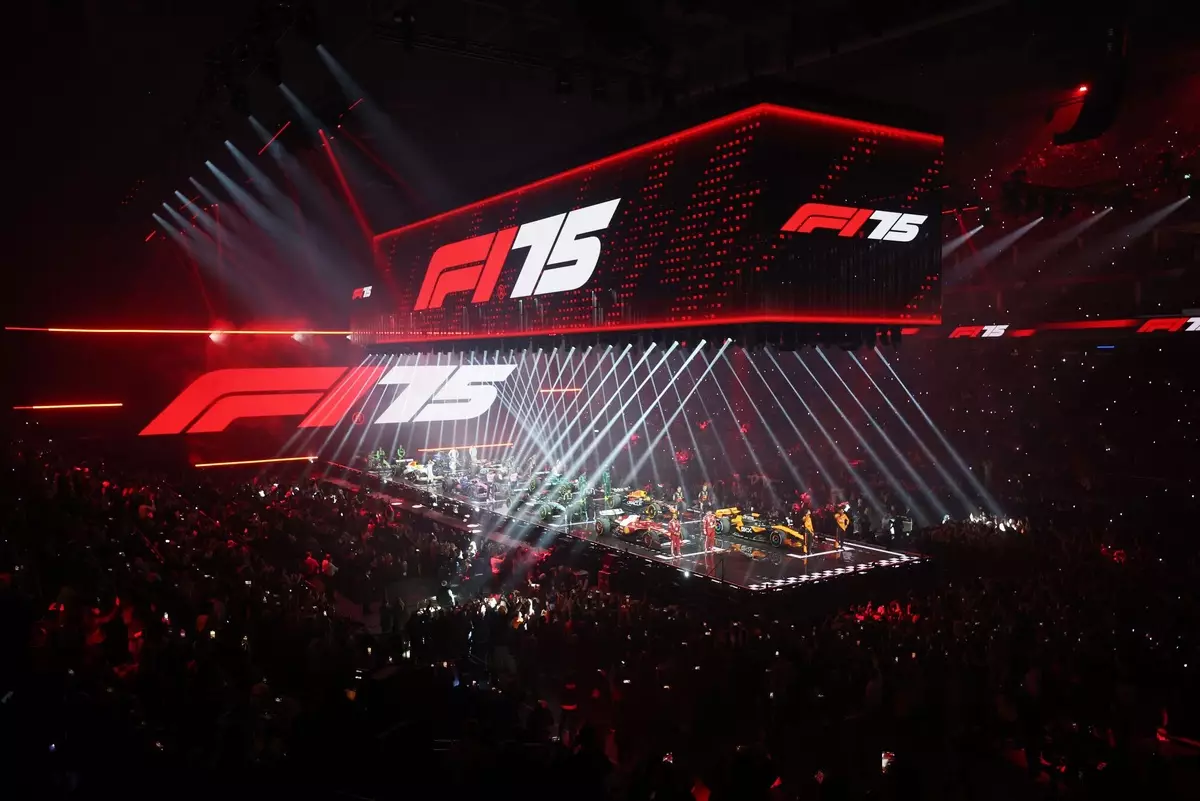The recent launch event for the F175 livery at London’s O2 Arena marked a significant paradigm shift in how Formula 1 (F1) engages with its fanbase. While purists might lament the overtly theatrical flair of such events, the reality is that the sport is evolving to attract a broader audience. This launch event, characterized by its extravagant presentations and celebrity interactions, reflects F1’s ambition to step beyond the traditional confines of racing and redefine its public image.
The evening was filled with buzz and enthusiasm, fueled by the roaring cheers whenever Lewis Hamilton appeared on screen. In contrast, the reception for Red Bull Racing’s Christian Horner and Max Verstappen was notably less welcoming. These mixed reactions highlight how the sport’s narrative is shifting — personalities are being constructed not just on the track but in the entertainment arena as well. The atmosphere in the O2 was electric, but this came at a cost that stirred considerable concerns among the teams.
As the glitzy presentations unfolded, a shadow loomed over the event: the high costs associated with staging such a spectacle. Reports suggest that Red Bull’s presentation alone incurred around £800,000, a substantial expense that raises questions for teams balancing their budgets. The issue isn’t just the financial implications; it’s also about the time consumed away from essential public relations functions and sponsor interactions, which are critical for maintaining investor relations and fan engagement.
Many within the paddock expressed their discontent, worried that such a focus on showmanship detracted from the core identity of the sport. However, it’s essential to recognize that Formula 1 functions not merely as a racing series but as an entertainment entity that thrives on its image and outreach. This event may have not found favor with the traditionalists, yet it successfully captured and appealed to a new demographic of fans looking for an immersive experience.
The evening was not without its lighter moments. Host Jack Whitehall’s jabs at the drivers set the stage for a night filled with tongue-in-cheek humor and theatricality. Notably, when he teased Verstappen, the tense rivalry with George Russell provided an undercurrent of drama that only heightened the entertainment value. The laughter resonated with the audience, showcasing how humor can play a vital role in making the event engaging.
However, the contrast between enthusiastic support for Hamilton and the jeers directed at Horner indicates that the narrative of rivalry and personality has become just as vital as the sport itself. This development is emblematic of F1’s transformation into a character-driven spectacle, where every driver and team principal is cast in the role of a performer within a larger theatrical framework. The polarized reactions also suggest a burgeoning culture within F1 where heroism and villainy are finely woven into its fabric.
The event was bursting with visual flair, but responses to different team presentations varied considerably. Aston Martin’s homage to James Bond was well-executed, lending an air of sophistication to their launch. Meanwhile, McLaren’s nod to their historic achievements resonated positively with the crowd. However, the highly produced video from Red Bull raised eyebrows for being a bit detached from the on-ground excitement. Striking the right chord in terms of creativity and connection to the audience is essential, and areas like the F1 Academy received insufficient attention, highlighting missed opportunities.
Furthermore, fans yearned for a more visceral interaction with the machinery, as the absence of the sound produced by a live car firing up left a gap in an experience that should ideally celebrate the engineering marvels behind each vehicle. While the primary goal of entertaining a youth-centric crowd was achieved, the event would have felt even more complete with direct engagement from the cars themselves.
Despite criticisms, the event should be seen as a bold step forward. F1’s efforts to blend traditional sporting elements with modern entertainment are to be applauded; they aim to break down barriers and make motorsport accessible to a wider audience. The spectacle is an integral part of the sporting experience today, and events like the F175 launch signify a willingness to evolve and adapt to changing tastes.
With momentum swinging towards a younger audience, Formula 1 is poised for growth, and this event was a testament to that vision. While there may be aspects to refine in the future, the decision to embrace an engaging, modern format could very well redefine how racing purists and casual fans alike connect with the sport. In an era where entertainment values are paramount, F1 is betting big on the spectacle, and it seems that the gamble has paid off — for now.


Leave a Reply